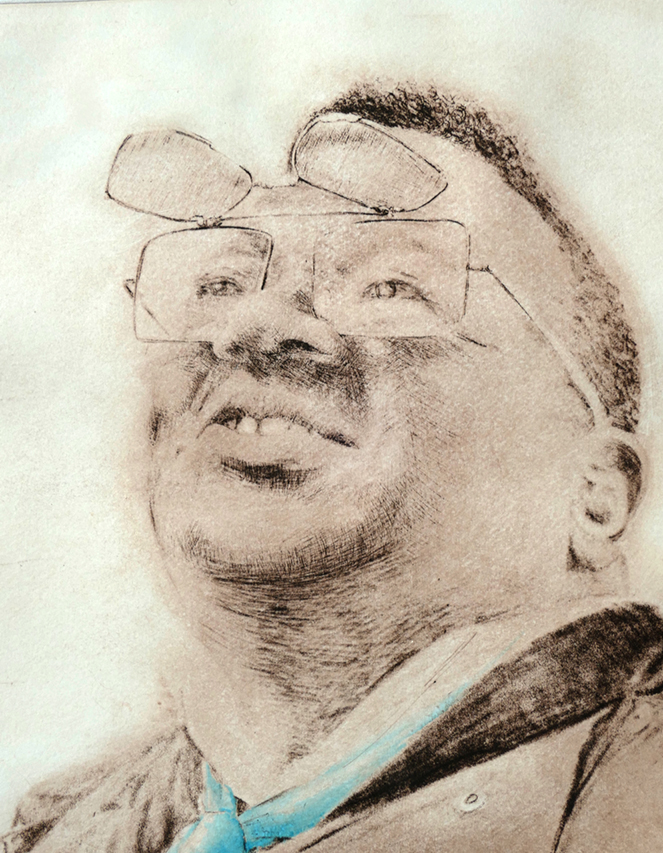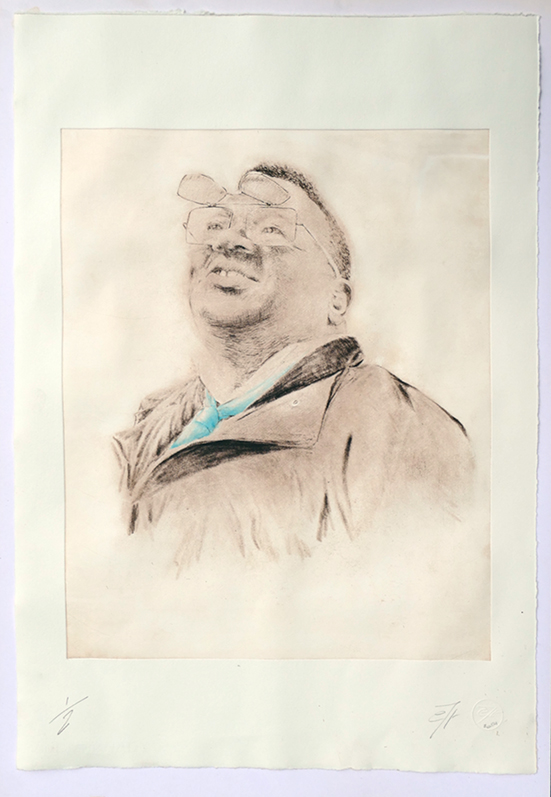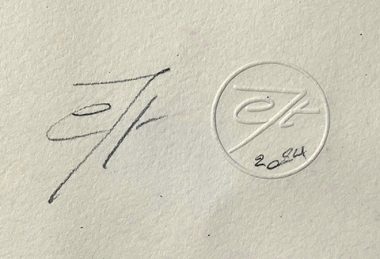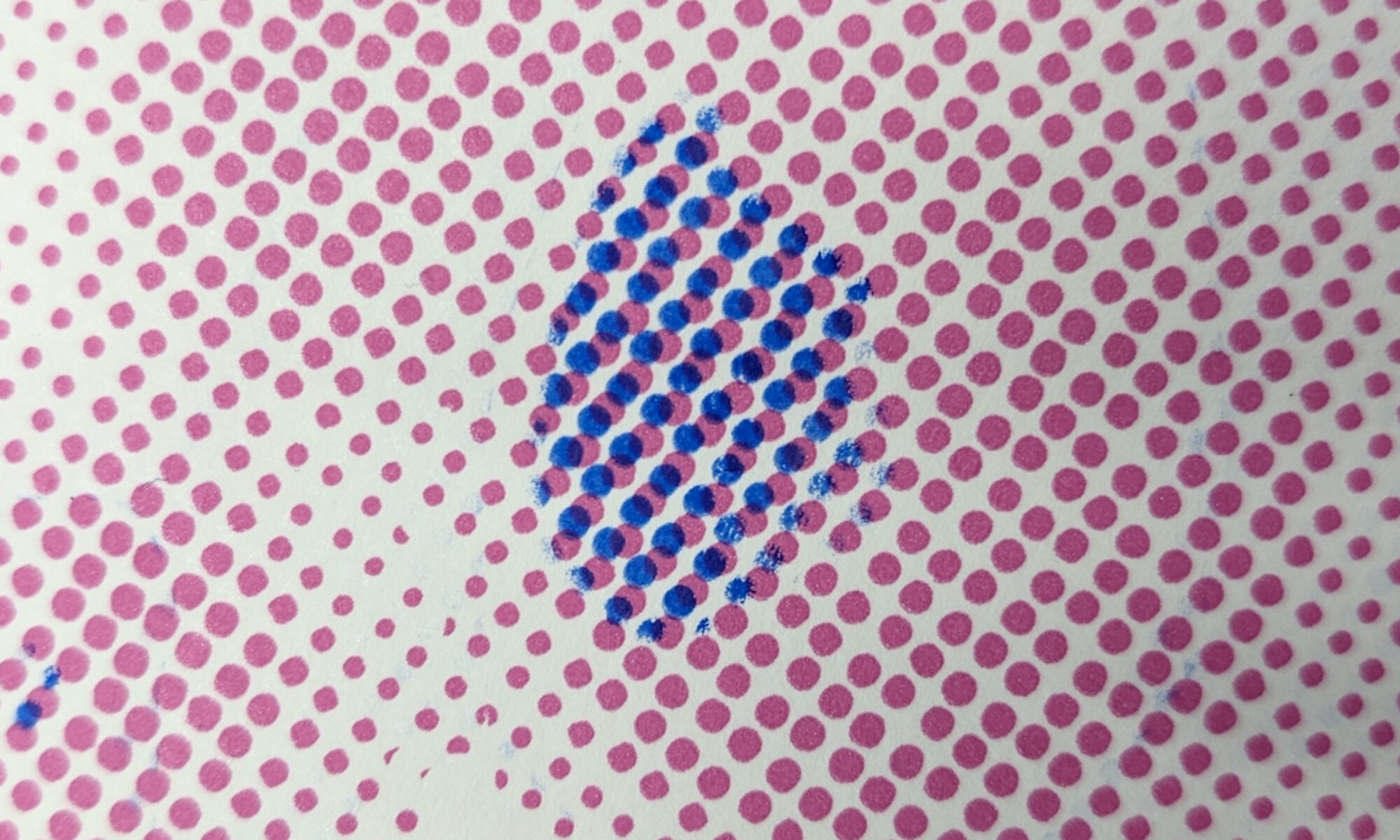Photo Polymer prints are usually initiated with a photograph. I wanted to play with the possibility of beginning a portrait print with a drawing from a smart phone photograph. The image was made at the opening of Sir Isaac Julien’s retrospective exhibition in 2023: What Freedom Means To Me. The show was wonderful unique mix of the political and poetic made over 40 years. It was great to meet Isaac after so long. He was wearing his cool LA gear flip shades which sat dramatically on his forehead. On my return home reviewing evening’s photos on my phone I thought one of them captured Isaac’s character and it might make a respectful celebratory portrait. The photogravure process exposes a continuous tone image on to a polymer plate which can be inked by hand and printed on quality heavy weight paper. I made the drawing on an iPad from the photograph which became the digital image to be exposed.
#one
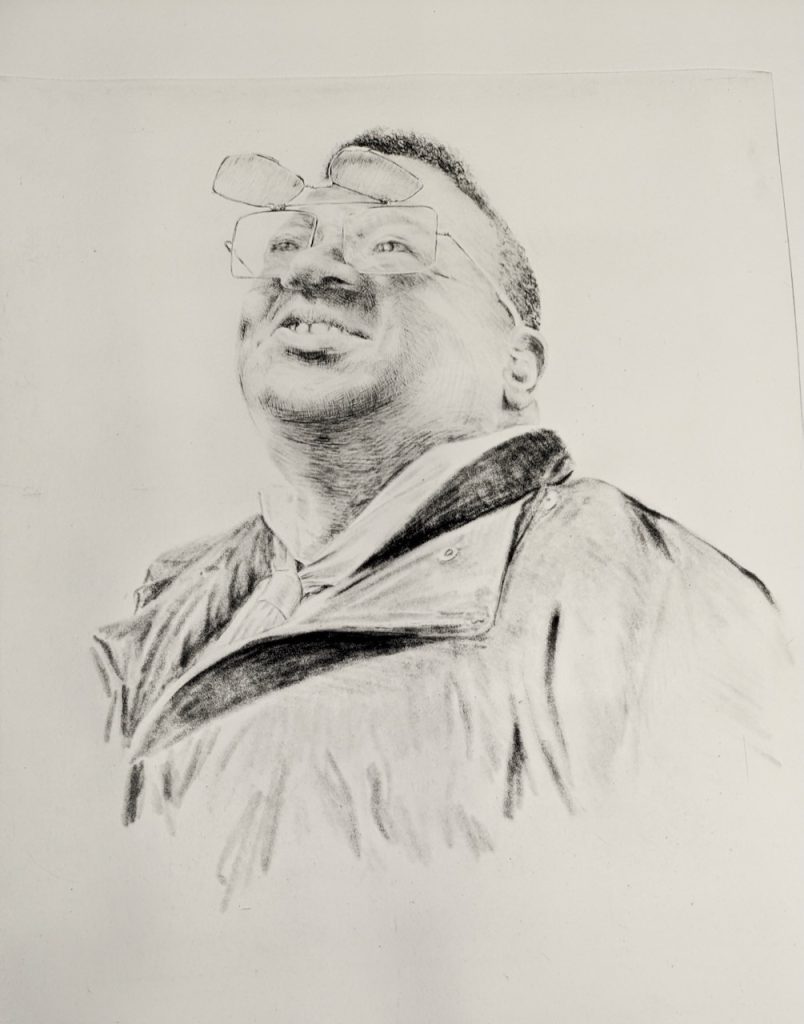
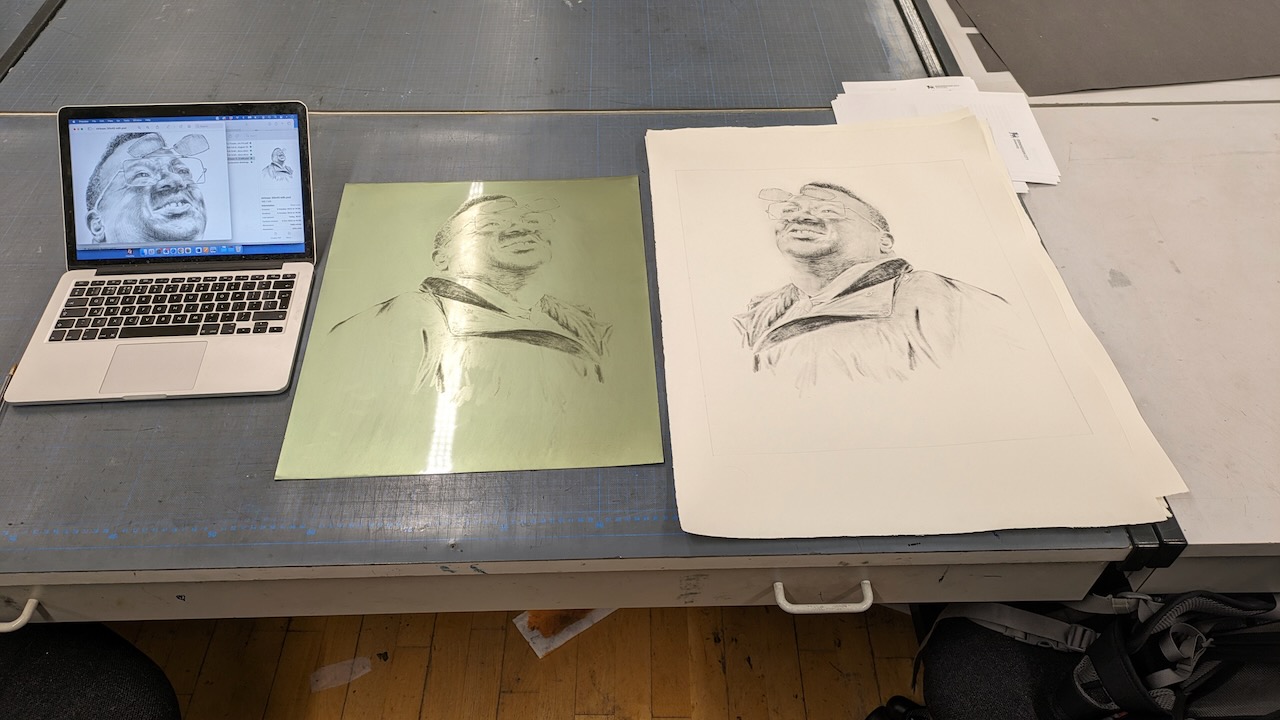
process
Digital photograph/drawing, intaglio plate and first proof
The first proof print was made with black etching ink on off white paper. The image was missing something of the warmth the portrait demanded. I made a second drawing with more detail, broader tone to offer the contrasts between Isaac’s face, skin, hair, shirt, tie, jacket and shades. The drawing marks and pencil strokes are more apparent. Re exposing this and proofing it delivered a deeper portrayal and potential for print.
#two
The monotone image was valuable, but again there might be more to be achieved. Consulting master printmaker Justin Sanders we came up with the possibility of applying a viscosity print technique to allow a colour to be integrated with the black ink image. The process requires the plate to be inked up as normal, but before printing, a selected colour is rolled over the high points of the plate leaving the black ink the recesses. This is a relief and intaglio hybrid process invented by Stanley Hayter (b.1901 Hackney) in his Parisian studio Atelier 17. It requires skilled mixing of differing viscosities of ink applied evenly with hard and soft rollers.
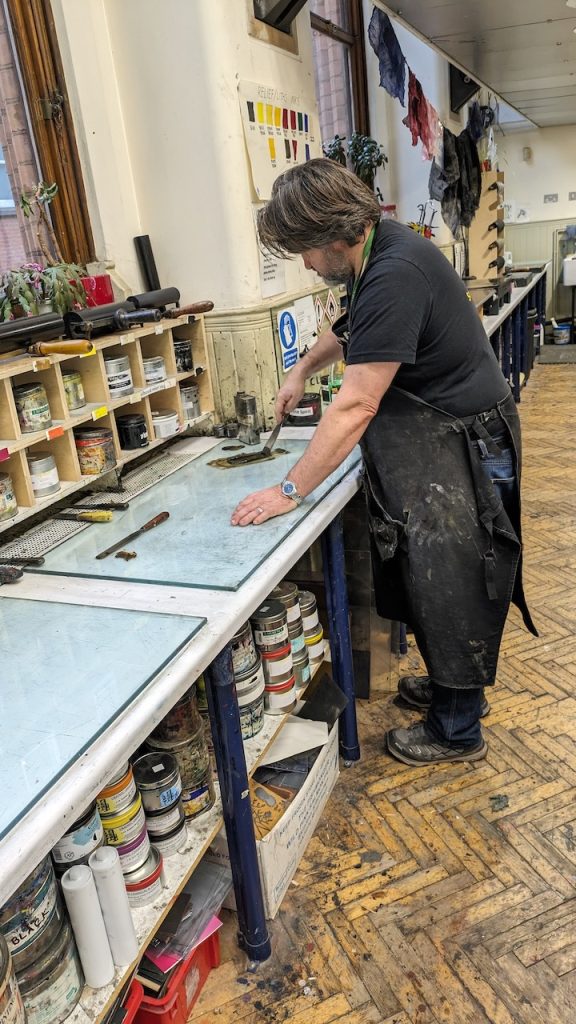

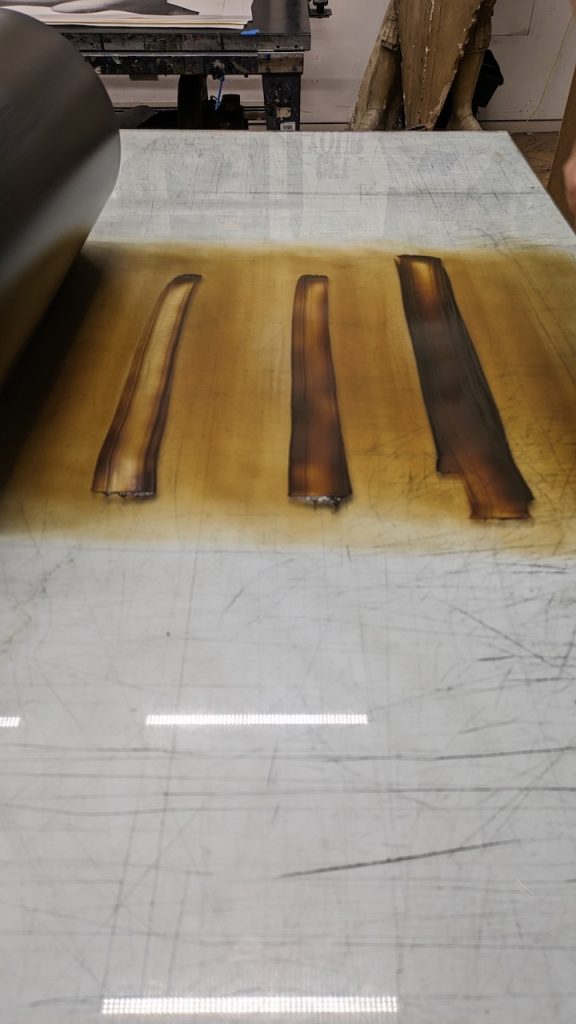
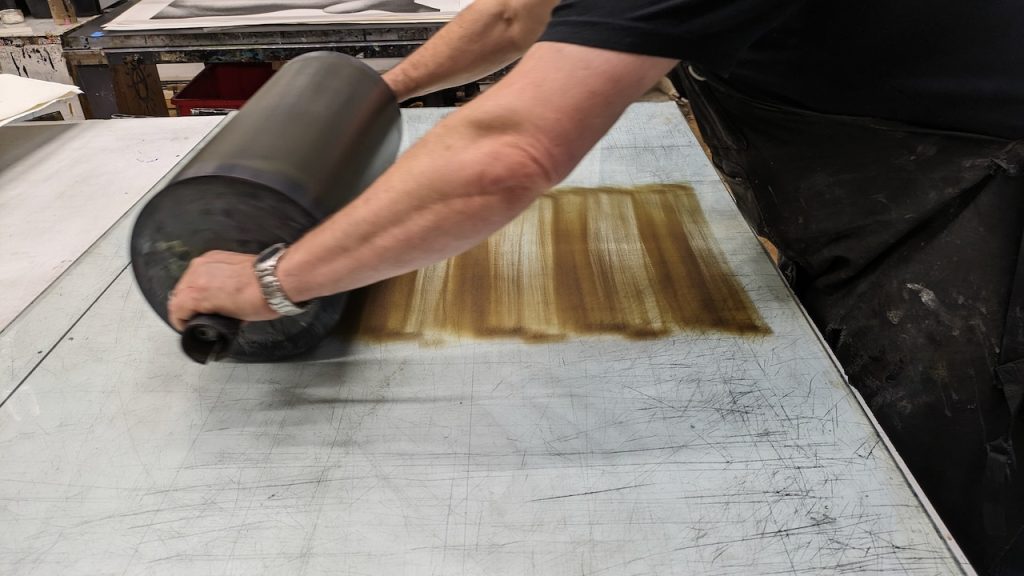
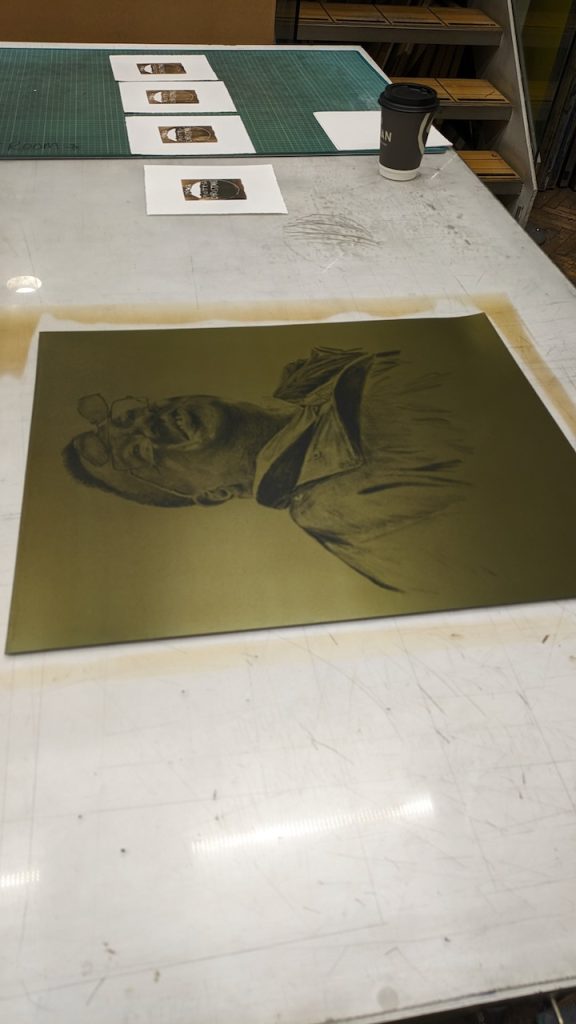
The resultant prints on Hahnemühle paper give an impression of a drawn/photo portrait set in a single flat colour space. On closer inspection the colour areas have a texture that allows the ink to be patterned created when the ink viscosity reacts to the paper as it dries. Use the magnifier cursor to see the patterns.
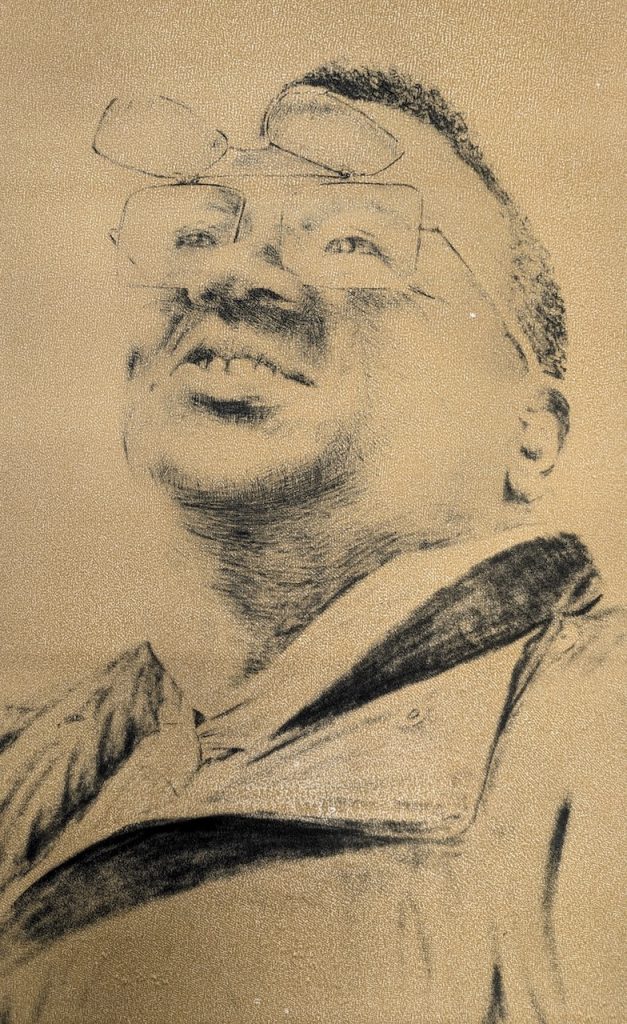
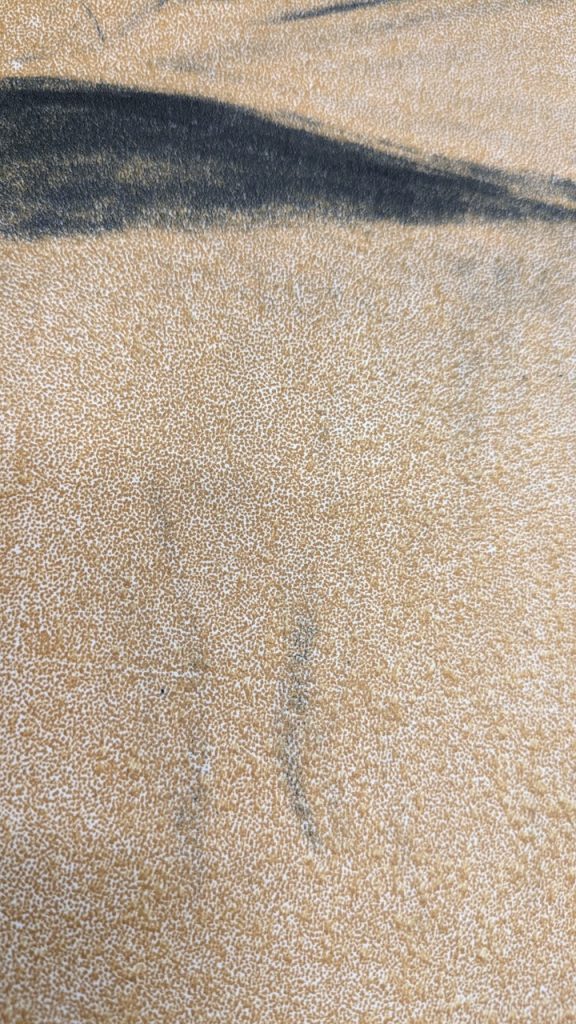
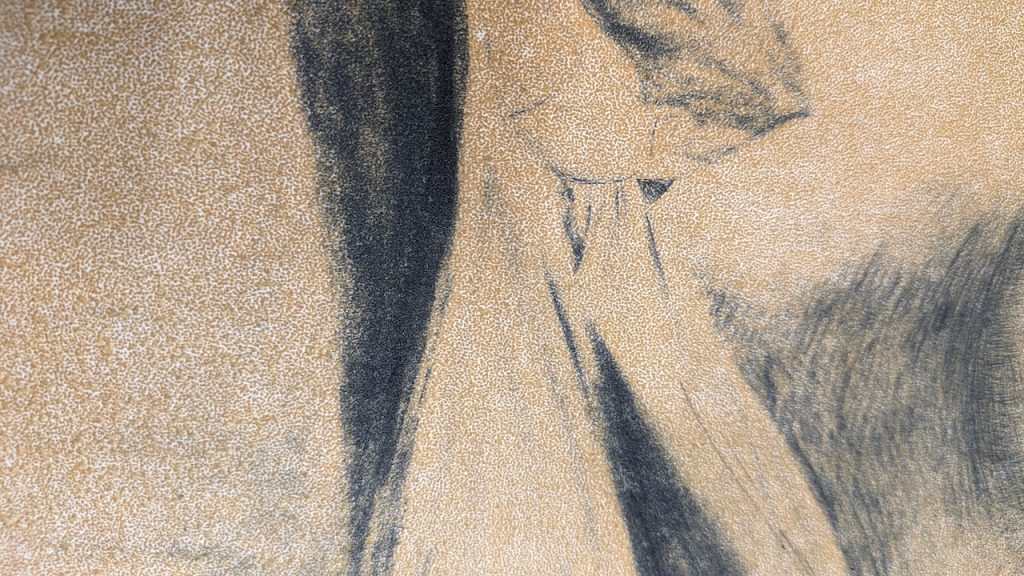
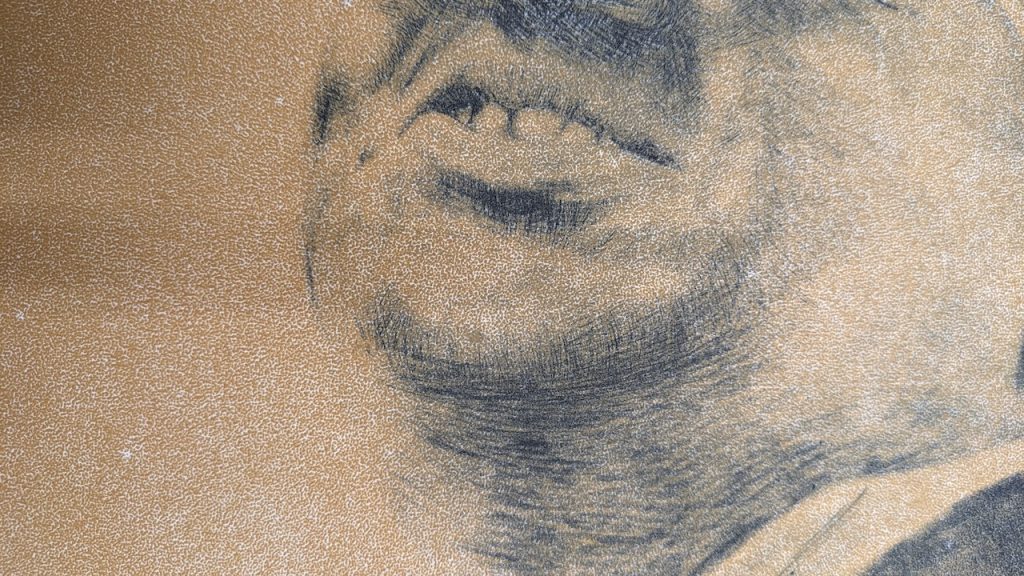
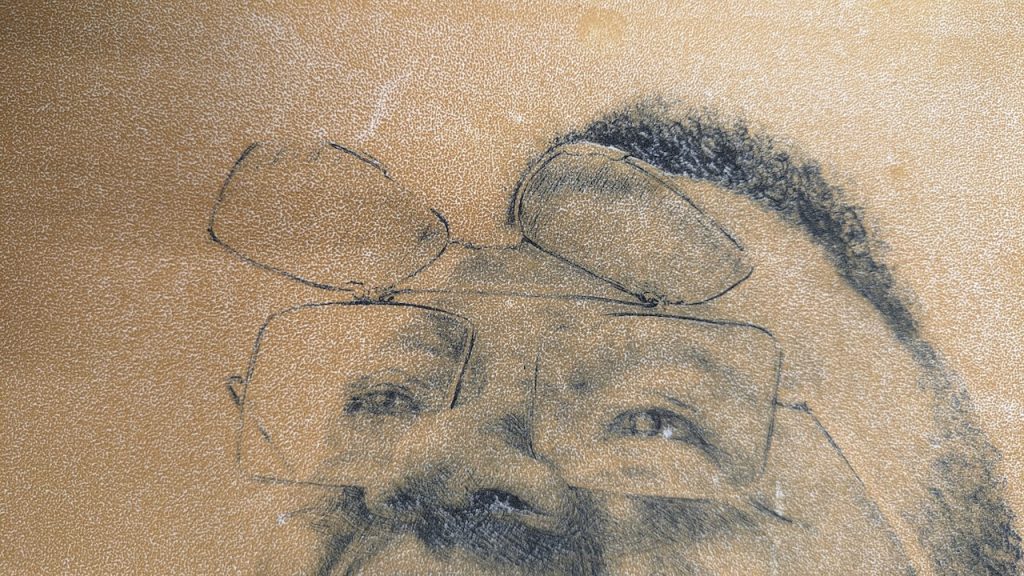
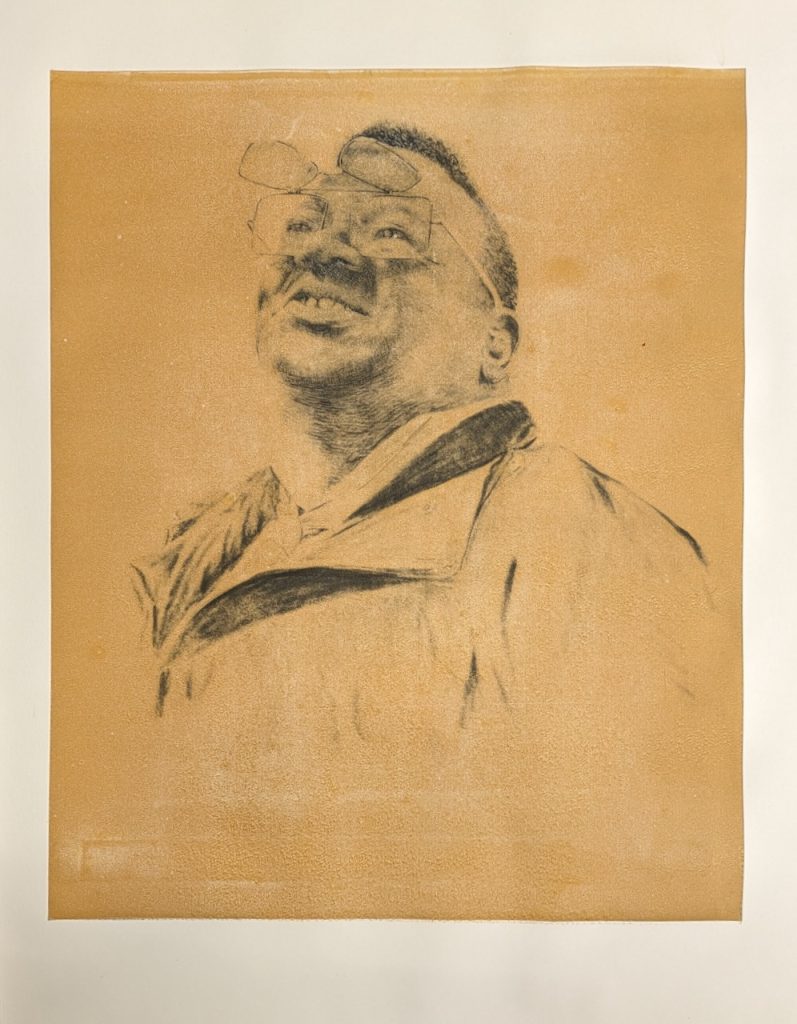
A further experiment was made to make another addition of colour while leaving the background clear. Using the same plate a black red mix was applied to the whole image. Again printed on off white Hahnemühle provided a warmer overall image. This two colour hybrid print technique felt appropriate in portraying ‘SirIsaac’.
#three
In addition to Isaac’s select eyewear is his thin blue tie. I considered inking the area on the plate, but tested for colour using a pencil. It worked so well bringing forward the right bright blue that I drew into the print with a wet blue Aquarell pencil leaving highlights to carry the shimmering blue.

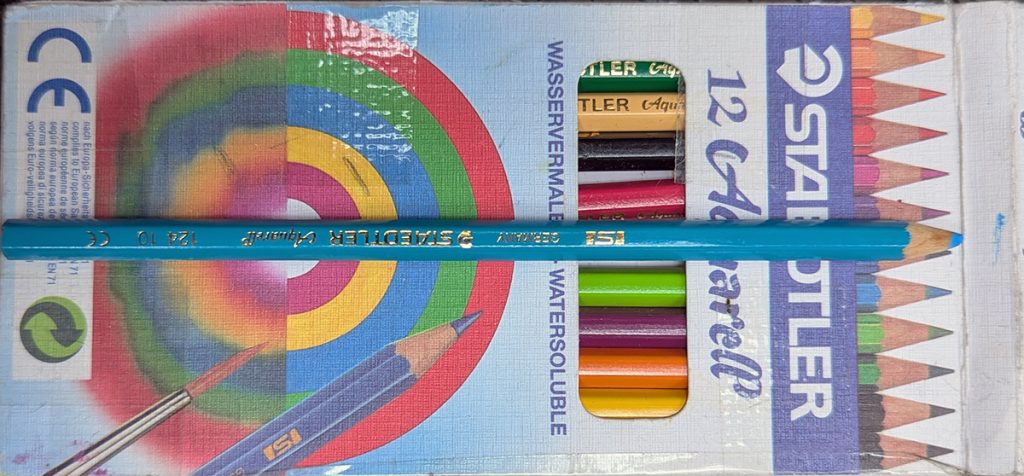
Sometimes the very basics can be the best.
